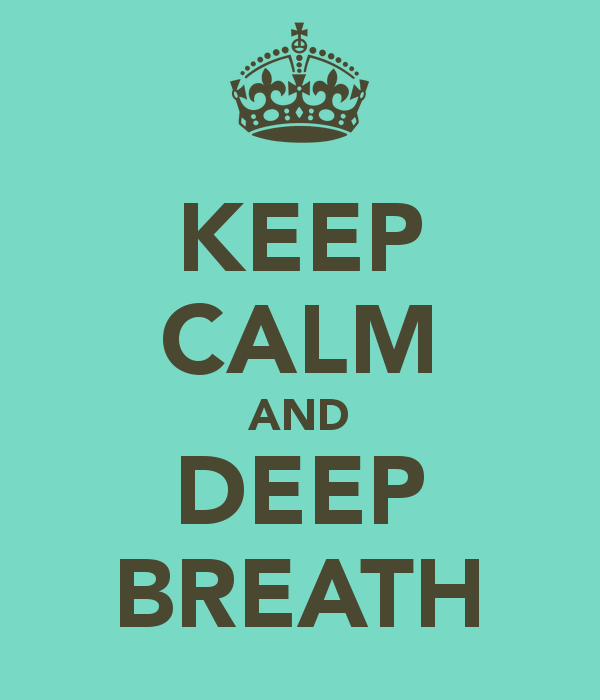Deep breathing exercises have been used for centuries in different practices to treat chronic back pain. For years the impact of emotional and social factors on back pain have been studied and proven that if you address each area the best that you can, your results will be positive. If you hate your job, struggle financially or are in a rocky relationship these all can have a direct impact on your current back pain. Today, I want to show you how deep breathing has increased my mobility, range of motion and reduced the irritation I experience in my back.
I know first hand what its like to go through stressful seasons of life and suddenly deal with excruciating back pain flare ups while it’s all going on. I am a firm believer that our social surroundings as well as our perception of stressors and even personality types can affect how our brains process pain. Before we get too deep into this, the most important thing to look at is the science behind how deep breathing works to relieve stress and help with pain management. I came across an article written but Dr. Mathew Wilson. Dr. Wilson runs MindfulnessMD.com. I’ll link to the full article below. I love the way Dr. Wilson explains what can be a very complicated system or systems. Check out how he explains the science behind how deep breathing techniques can relieve pain and stress.

The science behind how deep breathing exercises help relieve stress and pain
“Your body contains two opposing peripheral nervous systems that act as a sort of gas and brake, speeding up and slowing down various functions of the body (heart rate, digestion, etc.). The parasympathetic nervous system (PSNS) is the brake in this analogy while the sympathetic nervous system (SNS) is the gas.
For reasons beyond the scope of this article, your heart rate is primarily modified by the PSNS/”Brake” through the vagus nerve (3). This fact will become important in a little bit, for the time being, let’s proceed.
Your body is constantly trying to maintain equilibrium. When you inhale, blood is drawn from your heart into the vasculature of your lungs. This creates a relative deficit of blood for the rest of your body. Your heart compensates by increasing the heart rate and pushing more blood to your body. The increase in heart rate is made possible by decreased PSNS/”Brake” drive.
When you exhale, blood returns to your body from your lungs and the heart slows back down as the PSNS/”Brake” drive increases. The increase in heart rate during inhalation and decrease during exhalation is known as respiratory sinus arrhythmia and is a sign of a healthy heart.
While your heart is busy fiddling with throttle, the lungs are hard at work as well. The lungs contain slow adapting pulmonary stretch receptors (SARs). SARs are activated by the expansion of your lungs during inhalation. This activation causes an inhibitory signal to travel to your brainstem and suppress the SNS/”Gas” (as well as the PSNS/”Brake”). This decrease in SNS/”Gas” drive effectively makes more room for the relaxing effects of the PSNS/”Brake” than the body would normally experience during more rapid, shallow breathing.”
For a more in depth study on this topic check out this article found on Dr. Williams website.
Source: Dr. Mathew Williams MD – www.mindfulnessMD.com

In chronic, stressful situations your bodies natural response is to shut down and almost self preserve. Pain and stress on the body have a very similar affect. Chronic pain that goes untreated has the tendency to have a direct affect on the way you breath and recover from injury. For the average joe whether injured or not, typically you will you see a more short and shallow cycle along with constant muscle tightness surrounding the injury. This chronic irritation and breathing cycle goes on for weeks which turns into months and months turn into years. For a lot of people back pain starts out small and turns into a full blown chronic situation over time. As the area is improperly treated it continues to remain tight to protect the area. As you can imagine this causes issues up and down stream from the injury making it seem like it’s more than what it is.
Before we get into exactly how your yogin to apply these techniques to your own pain management program, I wanted you to hear from someone I respect on the topic of deep breathing.
Dean somerset from www.deansomerset.com was cool enough to drop some knowledge and personal experience with deep breathing exercises and techniques. Not only does he use deep breathing for himself but on his clients as well. Check out what Dean had to say!

- Before we get started. Would you mind giving us a little back history on your own back pain experience and where you are with it today?
Dean: Like a lot of strength coaches and personal trainers, I was a competitive athlete in high school and university, but I was pretty bad. Seriously, I sucked. I spent more time in the physio’s office than in practice. As a result of finding a way to injure pretty much every part of my body, I began to take a shine to rehab, initially setting my sites on getting into physiotherapy. Along the way, I realized I wanted to work with people through the entire continuum of health, not just in the clinical side of things, so I got a degree in kinesiology and chased some of the clinical certifications that could help expand my scope of practice.
One such injury was a bad tackle that wound up bulging a few discs, ripping a few muscles and dislocating my SI joint. It took about 6 months to walk unassisted again and about another decade to get stable enough to feel like it wasn’t fragile. A lot of the Because of how unstable the entire area was, I had to essentially relearn how to create a brace, develop tension, and find good positions to work from that would let me do stuff without it twinging or losing strength through the area. It was definitely an exercise in patience, and diligent focus on details that could help rebuild the active tissues to be strong enough to provide support is something that can be a huge challenge. It took me about 10 years to feel “good” with my back, and another couple of years to feel like the issues were relatively resolved.
- Deep breathing techniques have been used for hundreds of years both for meditation and pain management. In your experience, how powerful has this management tool been for you whether directly treating your back pain or just using it for overall pain management and wellness?
Dean: Very powerful. A lot of that comes down to how well the individual buys into the concepts of working breathing to help their issues, but there’s a lot of documented peer reviewed literature that shows the impact of breathing drills, in terms of autonomic regulation to endocrine function to sleep habits and even into strength development. It’s a big cornerstone of training, and one that I think a lot of trainers should spend some more time on than currently. When people say “breathing drills” everyone automatically thinks laying on your back with your feet against a wall and breathing into a balloon. This is a very good breathing drill, but it’s only one, and only accomplishes one goal. There are dozens of ways to use breathing as a mechanical pump, tissue mobilizer, neural tone regulator, pressure valve, or stress management tool depending on the goals at hand. Knowing how to flex between different drills can have a huge impact on a training program.

- Would you say utilizing your full breathing capacity (deep full breaths) is more for a meditation practice or something to be used with every day breathing?
Dean: A little of both. Deep sea divers use full deep breaths to prepare themselves for their dive, using it as a way of stretching their lungs to get more air in and almost “hyperoxygenating” their tissues. Powerlifters use a full breath combined with a valsalva maneuver to build intra abdominal pressure to help with their max lifts in order to control spinal motion. Using slow inhale/exhale modalities can help with increasing autonomic neural tone to help relax and get into those meditative states, but they can also help with developing mobility through tight joints and improve balance in single leg or unstable stances.
- As a leading coach in the health and fitness industry and someone who has dealt with back pain/injury personally, what are some key points you would teach someone just starting out with establishing a healthy breathing pattern?
Dean: If I’m a leading anything it’s an authority on what cookies are best. Hint: Chocolate chip hasn’t been bested yet.
Seriously though, the biggest thing to do is just watch what happens. Do they look like they’re not breathing or just getting enough air to not pass out? When they breathe, what segments of their bodies move to accommodate the increased volume of air: ribs, shoulders, or belly, or all three? Does their mobility change when they change their breathing, and if so was that what you wanted to see? Do they have more strength with a different style of breathing, and if so is that what you wanted to see? Just watch what’s going on, adjust to see what the effects are, and move forward to getting your clients into better positions for success.
- To piggy back off the last question, When trying to re-groove healthy posture and movement patterns there is a lot to think about when it comes to bracing, body position and technique. Throwing in a “new” breathing technique can be overwhelming and a lot to think about. What would you say to someone trying to juggle all of these things at one time?
Dean: Very good point. That’s why it’s important to layer your coaching with one or two things to work on at a time. Start with the key concepts, like what the initial starting position should be and what the motion looks like. Get them to do a couple of reps, and see what’s happening. If they look like the exact opposite of what you explained, back it up again. If it looks great, add in one or two more coaching points to help fine tune it. Often when I show a client an exercise, I’ll just say something like “start here, and then do this” while demonstrating the exercise. If they’ve worked with me for a while I’ll give a few more technique points we’ve worked on before in the past, and then see how they do it. If it’s new, we start with a low load or low volume, and build as they get more comfortable with the movement and their ability with the exercise.
How to use deep breathing exercises to relieve back pain..
To help treat your lower back pain, the technique you will become best friends with after today is known as deep belly breathing. There are different styles of deep breathing used in different situations but for the sake of what we are trying to accomplish with back pain, belly breathing is perfect. You have gotten a lot of back story so far so I want to just jump right into a simple exercise you can start doing now to see results.
Deep Breathing:
Most if not all of the people sitting around you at any given moment are not breathing right. Their short shallow breaths have become the norm and they don’t know any better. This lack of oxygen directly affects the muscle tissues and when dealing with tight muscles that could be causing back pain this is something you want to take very seriously. Whether you are sitting, standing or walking, your goal is to transition over to deep belly breathing 100% of the time.
Passive Deep Breathing Technique for Lower Back Pain
Step 1:
Lay flat on your back with your knees bent at 90 degrees. Oh and remove your shoes please (this will make sense shortly)
Step 2:
Place one shoe on you’re belly and one on your chest. Now take a deep breath like you normally would. Which shoe moved up the most? The one on you’re belly or the one on your chest?
Step 3:
Now, with the shoes still in position, take a slow, deep breath in through your nose. Focus all of that air directly into you’re belly, completely bypass filling the chest with air as much as possible. Your main focus is to move that shoe thats on your belly up as much as you can. Exhale through your nose and repeat this cycle.
Active Deep Breathing Technique for Lower Back Pain
Now that you have the passive technique down lets look at how to apply this to a more active lifestyle (walking, sitting, standing and during various activities).
Step 1:
Find neutral spine while in a standing position. Check out the video below to see an easy way to do this.
Step 2:
Now that you have your neutral position start with contracting your glutes to stabilize your hips. Once you have a slight contraction there, turn your focus to your stomach. Take a deep breath in through your nose and fill your belly. On the exhale, gently contract your core to match the contraction you have in your glutes ( If you need a goal to aim for as far as the strength in your contraction. I say go for a 10-20% contraction. You don’t want to be squeezing like your about to get punched in the stomach but don’t just let your trunk go 100% relaxed).
Step 3:
Now that your neutral spine is braced start walking forward. Your glutes will naturally release and contract during the walk but maintain focus on your abdominal wall. Keep it slightly braced and work on allowing your breaths to go into your belly and NOT just stop at your chest. This is going to feel weird but with practice it will get easier and easier.
What not to do:
Don’t overthink what you’re doing here. Remember the goal is to retrain your body to use the full capacity of your lungs. Simply breathing into your belly is not a “new thing” it’s the RIGHT thing. If you feel like a robot and almost restricted from the contractions and breathing cycle odds are your trying to either breath too hard and/or your contracting too hard. All you want to be doing is bracing the spine in that neutral position.
Whew, So that’s it. If your looking to take a super easy approach to help alleviate back pain it doesn’t have to be done seeing specialist after specialist. Do the simple things first and see how they work. Deep breathing is something and anyone can benefit from not just back pain sufferers. But if you are a back pain suffer stick to this until it becomes second nature.
To your relentless pursuit of drug free pain management,
William



2 thoughts on “Deep Breathing Exercises for Back Pain”
Comments are closed.